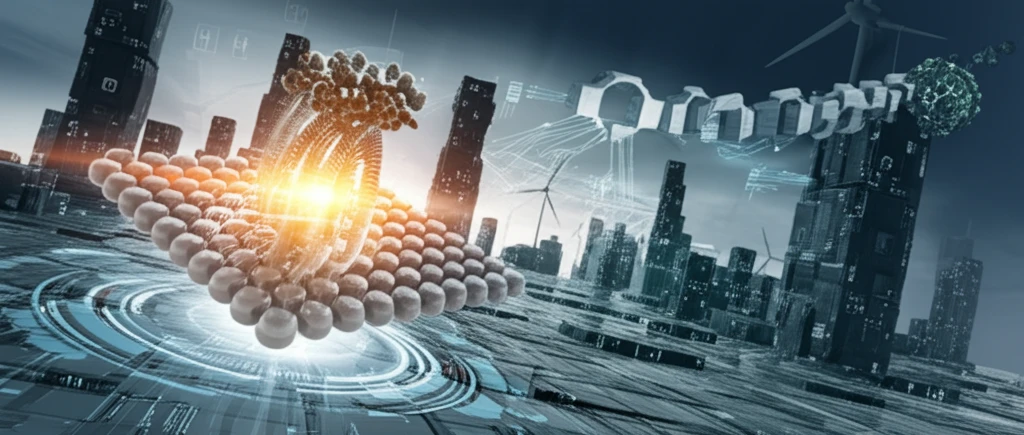
Power Up Your Life: The Future is Bright with Supercapacitor Technology
"Revolutionary ultrathin materials promise to transform energy storage, offering sustainable solutions for a world hungry for power."
In a world increasingly reliant on portable electronics, electric vehicles, and renewable energy sources, the need for efficient and sustainable energy storage solutions has never been greater. Traditional batteries, while ubiquitous, come with limitations: they degrade over time, can be slow to charge, and often contain environmentally harmful materials. Enter supercapacitors, the unsung heroes of the energy world, offering a compelling alternative with faster charging times, longer lifespans, and a smaller environmental footprint.
Supercapacitors, also known as ultracapacitors or electrochemical double-layer capacitors (EDLCs), bridge the gap between conventional capacitors and batteries. Unlike batteries that store energy through chemical reactions, supercapacitors store energy electrostatically, accumulating ions on the surface of an electrode material. This fundamental difference allows supercapacitors to charge and discharge much faster than batteries, making them ideal for applications requiring bursts of energy or rapid power delivery.
Recent breakthroughs in materials science are propelling supercapacitor technology to new heights. Researchers are exploring novel materials and designs to enhance energy density, power density, and overall performance. One promising avenue involves the use of ultrathin manganese oxide nanosheets coating carbon nanocoils, a combination that demonstrates exceptional potential for asymmetric supercapacitor electrodes.
The Science Behind the Spark: Ultrathin Materials for Supercapacitors

At the heart of this innovation lies the quest for materials that maximize surface area and electrical conductivity. Manganese oxide (MnO2) is an attractive electrode material due to its abundance, low cost, and environmental friendliness. However, MnO2 suffers from poor electrical conductivity, limiting its performance in supercapacitors. To overcome this limitation, researchers are exploring composite materials that combine MnO2 with highly conductive carbon nanostructures.
- Enhanced Energy Density: The ultrathin nanosheet structure maximizes the active surface area, allowing for greater ion accumulation and energy storage.
- Improved Power Density: The highly conductive carbon nanocoils facilitate rapid electron transport, enabling fast charging and discharging.
- Long Cycle Life: Supercapacitors based on this composite material exhibit excellent cycling stability, maintaining their performance over thousands of charge-discharge cycles.
- Sustainable Materials: MnO2 and carbon are relatively abundant and environmentally friendly materials, contributing to a more sustainable energy storage solution.
The Future is Charged: Supercapacitors Poised to Power a Sustainable Tomorrow
The development of high-performance supercapacitors based on ultrathin manganese oxide nanosheets and carbon nanocoils represents a significant step forward in energy storage technology. These devices offer a compelling combination of high energy density, high power density, long cycle life, and sustainable materials, making them ideal for a wide range of applications. As research continues and manufacturing costs decrease, supercapacitors are poised to play an increasingly important role in powering a sustainable future.
